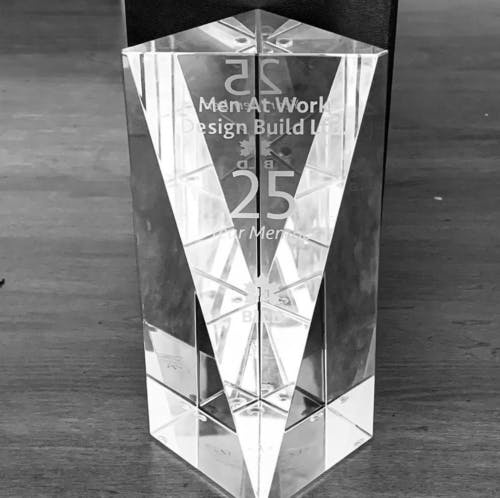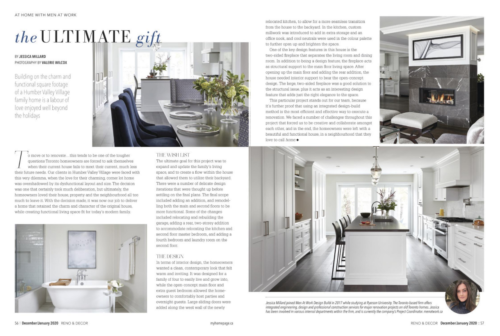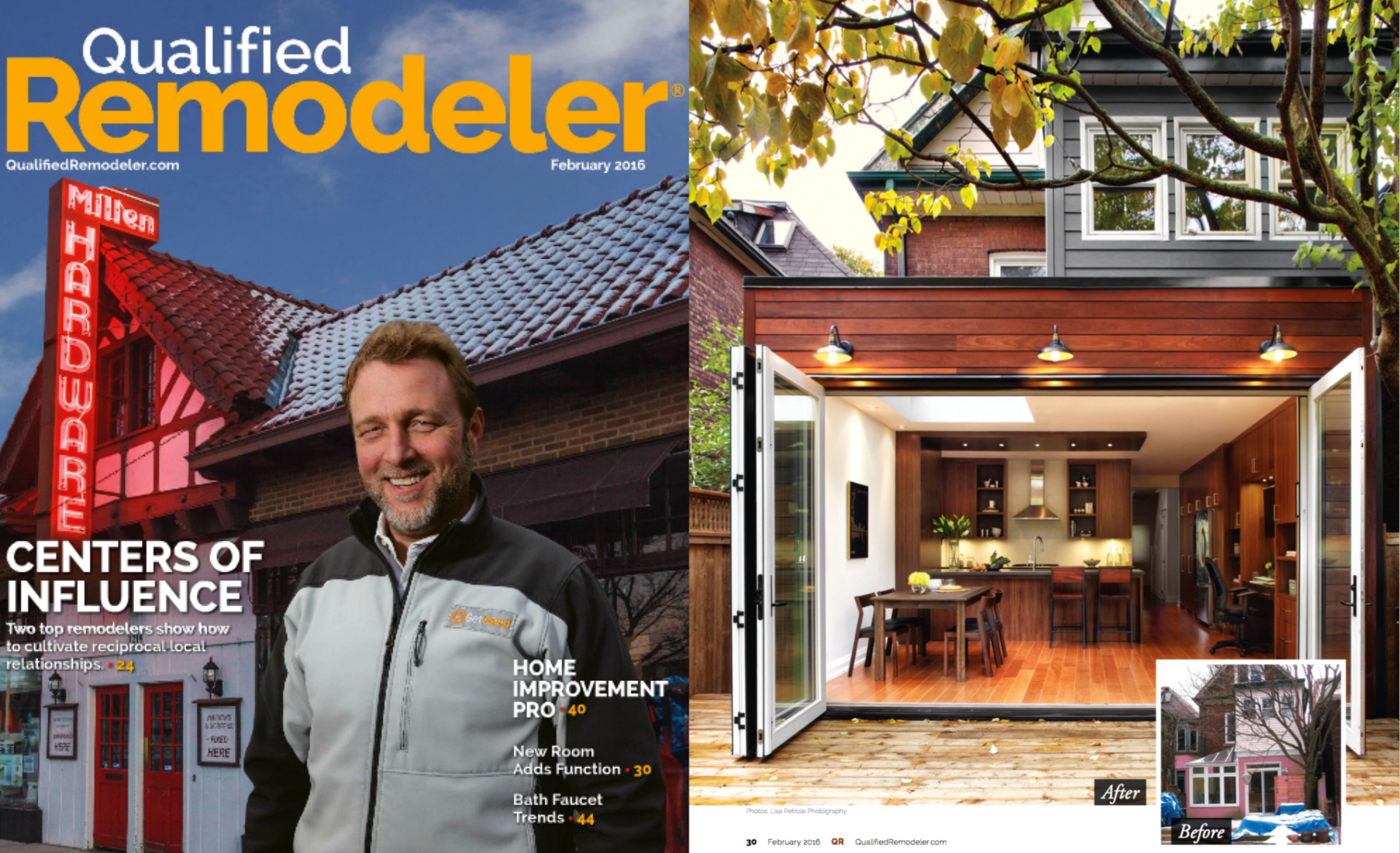
Master Design Awards: Qualified Remodeler Magazine
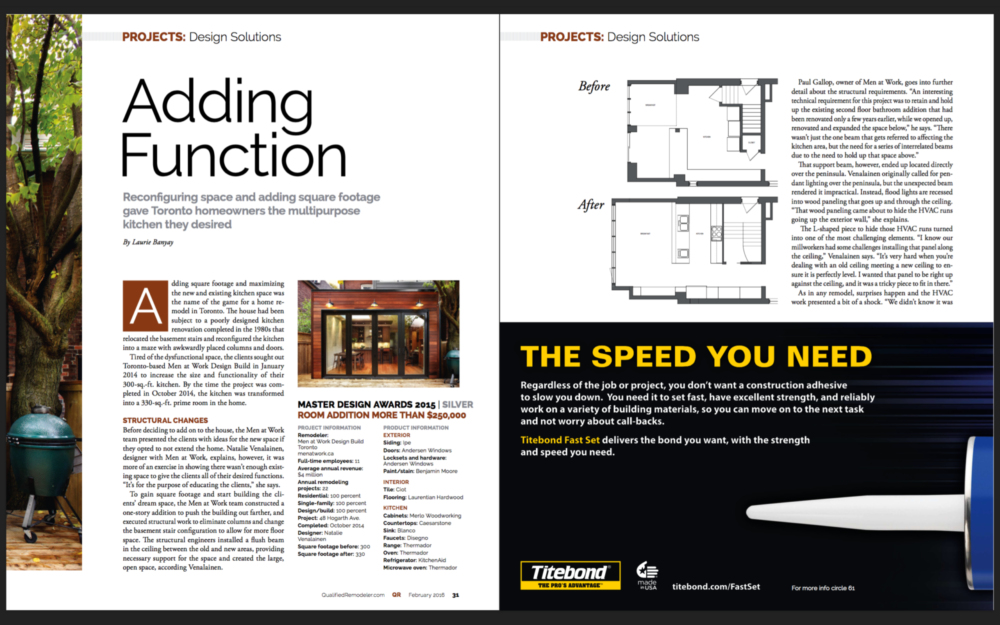
ADDING FUNCTION
Authored by Laurie Banyay, featured in Qualified Remodeler February 2016 issue.
Reconfiguring space and adding square footage gave Toronto homeowners the multipurpose kitchen they desired.
MASTER DESIGN AWARDS SILVER ROOM ADDITION MORE THAN $250,000
Project Information:
- Remodeller: Men At Work Design Build Toronto
- Full-time employees: 11
- Average annual revenue: $4 million
- Annual remodelling: 22
- Residential: 100 per cent
- Single-family 100 per cent
- Design/Build: 100 per cent
- Project: 48 Hogarth Avenue
- Completed: October 2014
- Designer: Natalie Venalainen
- Square footage before: 300
- Square footage after: 330
Product Information
Exterior
- Siding: Ipe
- Doors: Andersen Windows
- Locksets and hardware: Andresen Windows
- Paint/Stain: Benjamin Moore
Interior
- Tile: Clot
- Flooring: Laurentian Hardwood
Kitchen
- Cabinets: Melro Woodworking
- Countertops: Caesarstone
- Sink: Blanco
- Faucets: Disengno
- Range: Thermador
- Oven: Thermador
- Refrigerator
- Microwave oven
Addition square footage and maximizing the new and existing kitchen space was the name of the game for a home remodel in Toronto. The house had been subject to a poorly designed kitchen renovation completed in the 1980s that relocated the basement stairs and reconfigured the kitchen into a maze with awkwardly placed columns and doors.
Tired of the dysfunctional space, the clients sought out Toronto-based Men At Work team presented the clients with ideas for the new space if they opted to not extend the home.
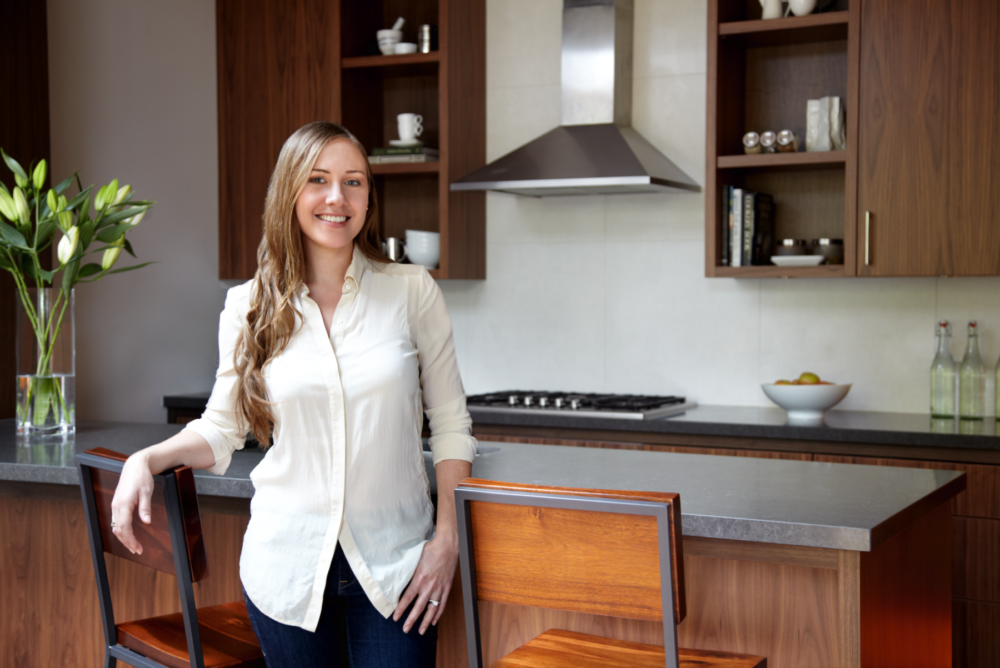
Natalie Venalainen, designer with Men At Work, explains, “However, it was more of an exercise in showing there wasn’t enough existing space to the clients all of their desired functions,” she says. “It’s for the purpose of educating the clients.”
To gain square footage and start building the clients’ dream space, the Men At Work team constructed a one-story addition to the building pushing out farther and executed structural work to eliminate columns and change the basement stair configuration to allow for more floor space. The structural engineers installed a flush beam in the ceiling between the old and new areas, providing necessary support for the span, created the large, open space, according to Venalainen.
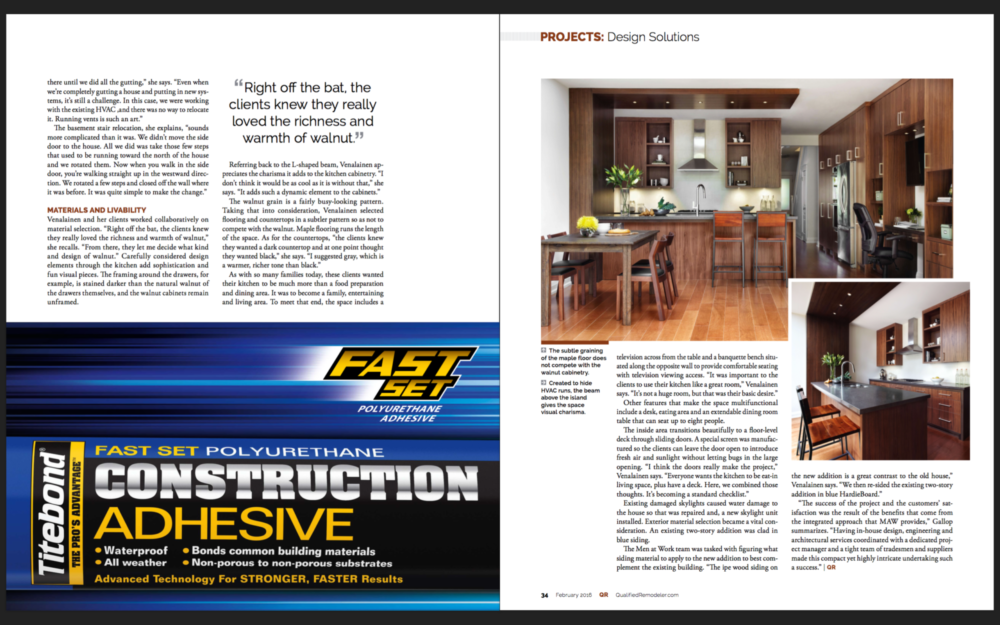
Paul Gallop, owner of Men At Work, goes into further detail, “An interesting technical requirement for this project was to retain and hold up the existing second-floor bathroom addition that had been renovated and expanded the space below,” he says. “There wasn’t just the one beam that gets referred to affecting the kitchen area, but the need for a series of interrelated beams due to the need to hold up that space above.”
That support beam, however, ended up located directly over the peninsula. Venalainen originally called for a pendant lighting over the peninsula, but the unexpected beam rendered it impractical. Instead, flood lights are recessed into wood panelling that goes up and through the ceiling. “That wood panelling came about to hide the HVAC runs going up the exterior wall, ” She explains.
The L-shaped piece to hide those HVAV runs turned into one of the most challenging elements. “I know our millworkers had some challenges installing that panel along the ceiling,” Venalainen says. ” It’s very hard when you are dealing with an old ceiling meeting a new ceiling to ensure it is perfectly level. I wanted that panel to be up against the ceiling, and it was a tricky piece to fit it there.”
As in any remodel, surprises happen and the HVAC work presented a bit of a shock. ” We didn’t know it was there until we did all the gutting,” She says. “Even when we’re completely gutting a house and putting in new systems, it’s still a challenge. In this case, were working with the existing HVAC, and there was no way to relocate it. Running vents is such an art.”
The basement stair relocation. She explains, “Sounds more complicated than it was. We didn’t move the side door to the house. All we did was take those few steps that used to be running toward the north of the house and we rotated them. Now when you walk in the side door, you’re walking straight up in the westward direction. We rotated a few steps and closed off the wall there it was before. It was quite a simple to make the change.”
MATERIALS AND LIVABILITY
Venalainen and her clients worked collaboratively on material selection. Carefully considered design elements through the kitchen add sophistication and fun visual pieces. The framing around the drawers, for example, is stained darker than the natural walnut of the drawers themselves, and the walnut cabinets remain unframed.
“Right off the bat, the clients knew they really loved richness and warmth of walnut,” she recalls. “From there, they let me decide what kind of design of walnut.”
Referring back to the L-shaped beam, Venalainen appreciates the charisma it adds to the kitchen cabinetry. “I don’t think it would be as cool as it is without that,” she says. “It adds such a dynamic element to the cabinets.”
The walnut grain is a fairly busy-looking pattern. Taking that into consideration, Venalainen selected flooring and countertops in a subtle pattern so as not to compete with the walnut. Maple flooring runs the length of the space.
As for the countertops, “The clients knew they wanted a dark countertop and at one point thought they wanted black,” she says. “I suggested grey, which is a warmer, richer tone than black.”
As with so many families today, these clients wanted their kitchen to be much more than a food preparation and dining area. It was to become a family, entertaining and living area. To meet that end, the space includes a television across from the table and a banquette bench situated along the opposite wall to provide comfortable seating with television viewing access.
“It was important to the clients to use their kitchen like a great room,” Venalainen says. “It’s not a huge room, but that was their basic desire.”
Other features that make the space multifunctional include a desk, eating area and an extendable dining room table that can seat up to eight people.
The inside area transitions beautifully to a floor-level deck through sliding doors. A special screen was manufactured so the clients can leave the door open to introduce fresh air and sunlight without letting bugs in the large opening.
“I think the doors really make the project,” Venalainen says. “Everyone wants the kitchen to be eat-in living space, plus have a deck. Here, we combined those thoughts. It’s becoming a standard checklist.”
Existing damaged skylights caused water damage to the house so that was repaired and, a new skylight unit installed. Exterior material selection became a vital consideration. An existing two-story addition was clad in blue siding. The Men at Work team was tasked with figuring what siding material to apply to the new addition to best complement the existing building. “The ipe wood siding on the new addition is a great contrast to the old house,” Venalainen says. “We then re-sided the existing two-story addition in blue HardieBoard.
“The success of the project and the customers’ satisfaction was the result of the benefits that come from the integrated approach that MAW provides,” Gallop summarizes. “Having in-house design, engineering and architectural services coordinated with a dedicated project manager and a tight team of tradesmen and suppliers made this compact yet highly intricate undertaking such a success.”
Think your home’s issues can’t be resolved–think again! Check out our case studies we’ve seen it all and can help you.

